Media | Articles
Alfa Romeo’s 33 Stradale does justice to a timeless original
Throughout automotive history, few expressions have been misused more often than this marketing standby: “race car for the road.” Cliché, indeed, but accurate in the case of the 1967 Alfa Romeo 33 Stradale.
Development of a road-going version of the Alfa Romeo “Tipo 33” sports prototype started before the latter’s racing career had even begun. Company president Giuseppe Luraghi’s target for Carlo Chiti—the head of Alfa’s racing department, Autodelta—was as simple as it was ambitious: The 33 Stradale had to deliver no less than 95 percent of the racing car’s overall performance.
As time and resources were limited and legal requirements for homologation hardly an issue, the 33 Stradale inherited the race car’s exotic chassis design and highly-strung 1995-cc V-8 engine with remarkably few modifications. The result, presented in August of 1967, was a featherweight 1500-pound supercar that delivered Miura-esque performance with an engine half the size.
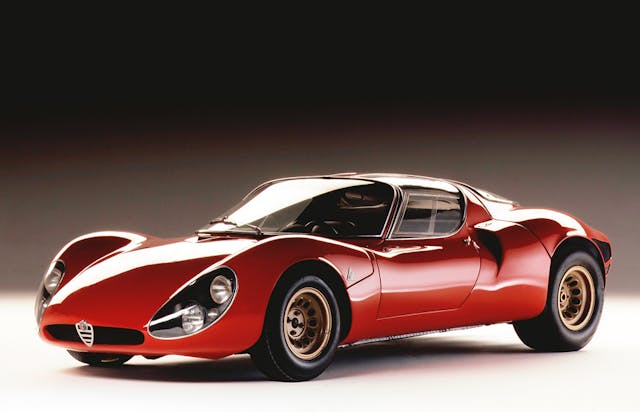
Despite this achievement, its extreme specification and blistering performance aren’t what people first think about whenever the 33 Stradale is mentioned. Attention instead lands on the voluptuous curves Franco Scaglione penned for the car, which earned the 33 Stradale a well-deserved reputation as one of the most beautiful automobiles ever made.
As a former car designer myself, I imagine the scale of reinventing such a classic design to have been monumental. As an Italian, as well, it would involve seriously conflicting emotions: On one hand, it is an Alfa Romeo supercar, which is the sort of assignment of which every designer dreams. On the other, however, it sets any work up against an ideal that is near-impossible to equal.
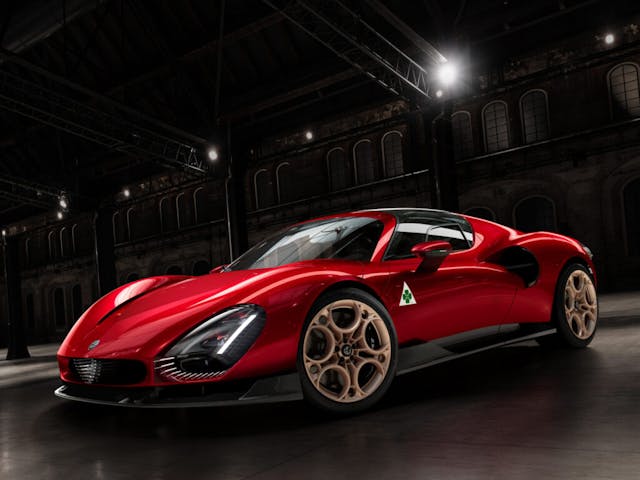
I interviewed Alfa Romeo’s head of exterior design, Bob Romkes, to pick his brain about the fascinating new 33 Stradale supercar. (Read the full story on that debut here.) For Romkes, reimagining the 33 Stradale for the 21st century was: “definitely an enormous challenge. But that wasn’t a reason not to do it. We wanted to dream and put the bar high for Alfa Romeo,” he said. “We have a very capable design team, so we trusted our capability to make something beautiful.”
Beautiful it is indeed. I admit to letting out a big sigh of relief once the smoke cleared and I first laid eyes on the new 33 Stradale. The stakes were high, but Alfa’s designers masterfully captured the 33 Stradale’s essence and delivered a gorgeous design that is a worthy homage to its hallowed namesake.

This is no small feat, especially given how much the world has changed since 1967. Designing a supercar in the 2020s is operating in an entirely different universe. “It was very important to find the right balance between the past, using the right cues from the original,” Romkes stressed, “but also looking to the future, to have something that hits the sweet spot between old and new.”
Like all the best classic Italian designs, the original 33 Stradale was devoid of gratuitous ornamentation, an approach Romkes was keen to maintain: “We wanted to use all the iconic features of the original car and combine them with aerodynamic features.” As an example, he cites the new car’s large headlights, which also integrate a functional cooling duct.
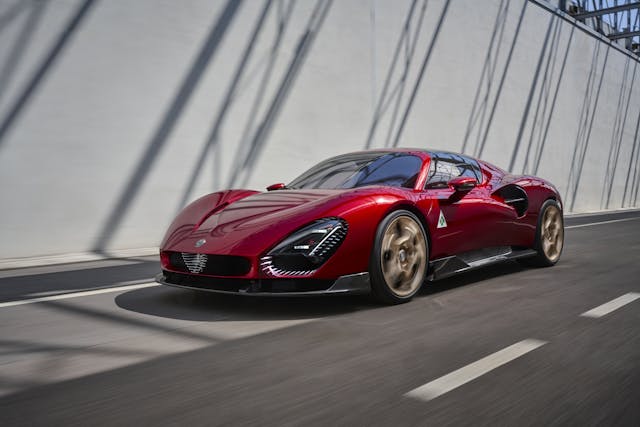
The same is true for the character lines on the front hood, which, as Romkes explains, not only evoke the shape of Alfa’s “shield” grille but also guide the air towards the side mirrors, whose shape was optimized to send the airflow towards the engine air intake on the sides.
Aerodynamics plays a crucial role in a vehicle capable of a top speed of over 200 mph, yet Alfa’s designers managed to avoid adding spoilers or other tacked-on bits. The new 33 Stradale retains the sexy, curvaceous side section that is such a hallmark of Scaglione’s original. That is my favorite aspect of the whole project, and Romkes explained how it was achieved: “Visually, we split the car in two. The lower part is technical and dark, while the upper part is the beauty, the sculpture.
“We passed many hours in the wind tunnel because we didn’t want to have active aerodynamics, so everything had to be in the sculpture, exactly like the original car.”
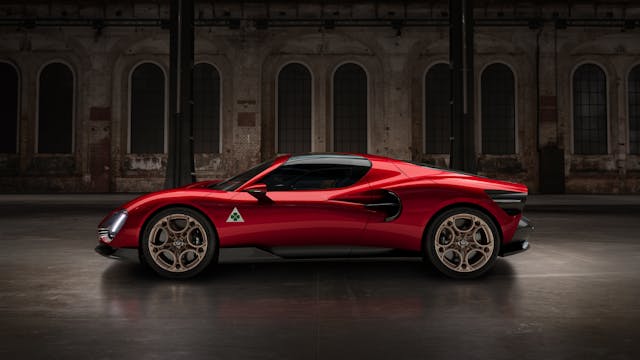

Still, designers found room to incorporate some neat detail touches. The one that immediately caught my attention is that aforementioned Alfa Romeo “shield,” whose layered, three-dimensional treatment reminded me of the front of the classic 2000 GTV. I wondered if that was indeed the inspiration: “Absolutely,” Romkes said. “That’s one of the most beautiful Alfa Romeo grilles.”
Although it may be purely coincidental, the new 33 Stradale’s reveal comes precisely 20 years after that of Alfa’s previous supercar, the 8C Competizione. That car went on to exert a powerful, lasting influence on the design of subsequent mass-market Alfa Romeos, so I wanted to know whether we could expect the same to happen for the 33 Stradale. Romkes remained predictably coy on that matter, but let on a little: “You’ll see elements of the 33 in the future lineup, but I cannot specify which ones.”
With this halo car, Alfa Romeo has produced a dream car that carries with it the promise of a brighter future for the brand. Speaking as a 40-year-old Italian, I’ve heard bold Alfa Romeo revival plans for as long as I’ve been alive, but looking at the new 33 Stradale makes me feel genuinely optimistic. The project is a shrewd play on nostalgia, yes, but it’s a well-executed one. And if there’s a brand that can pull such a thing off, it’s Alfa Romeo.
Remember, this is a brand with immense heritage yet nothing to lose in today’s market. The automotive world is in flux, facing an uncertain future, which means now is maybe the perfect time for Alfa Romeo to emphasize its unique history, futurism be damned. Because nothing sells like a good story, and Alfa’s rear-view is full of them.
***
Matteo Licata received his degree in Transportation Design from Turin’s IED (Istituto Europeo di Design) in 2006. He worked as an automobile designer for about a decade, including a stint in the then-Fiat Group’s Turin design studio, during which his proposal for the interior of the 2010–20 Alfa Romeo Giulietta was selected for production. He next joined Changan’s European design studio in Turin and then EDAG in Barcelona, Spain. Licata currently teaches automobile design history to the Transportation Design bachelor students of IAAD (Istituto di Arte Applicata e Design) in Turin.
***
Marketplace
Buy and sell classics with confidence
Check out the Hagerty Media homepage so you don’t miss a single story, or better yet, bookmark it. To get our best stories delivered right to your inbox, subscribe to our newsletters.
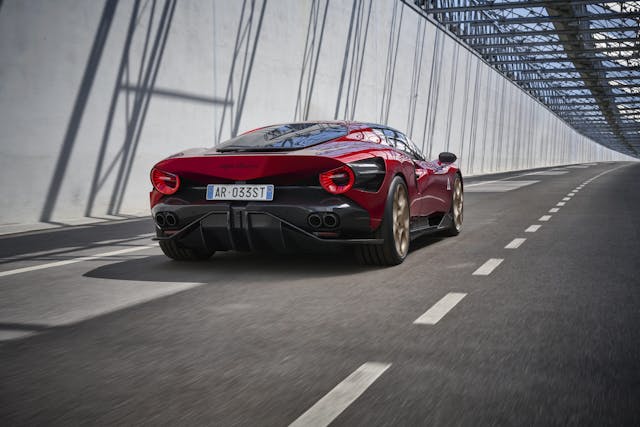
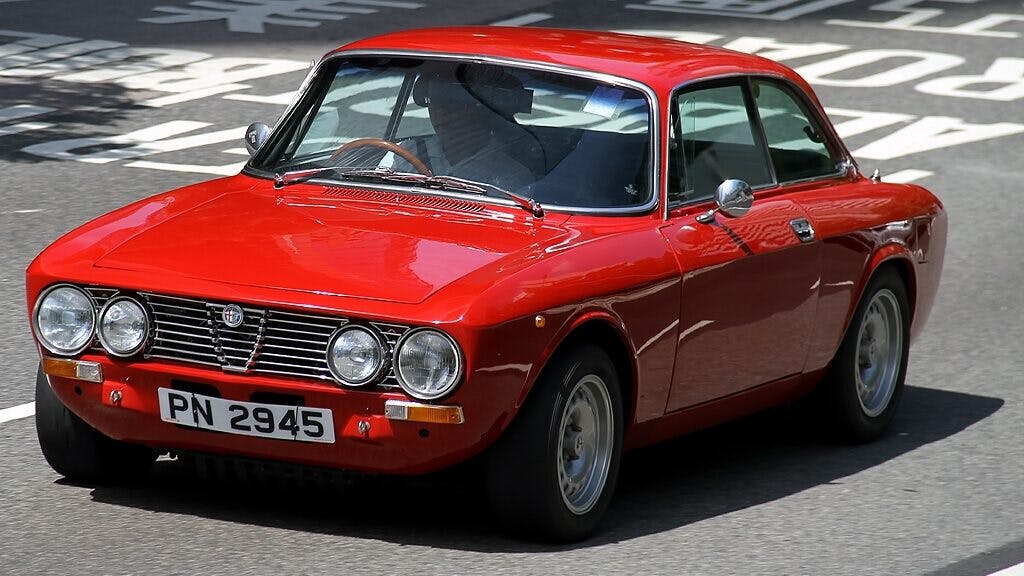
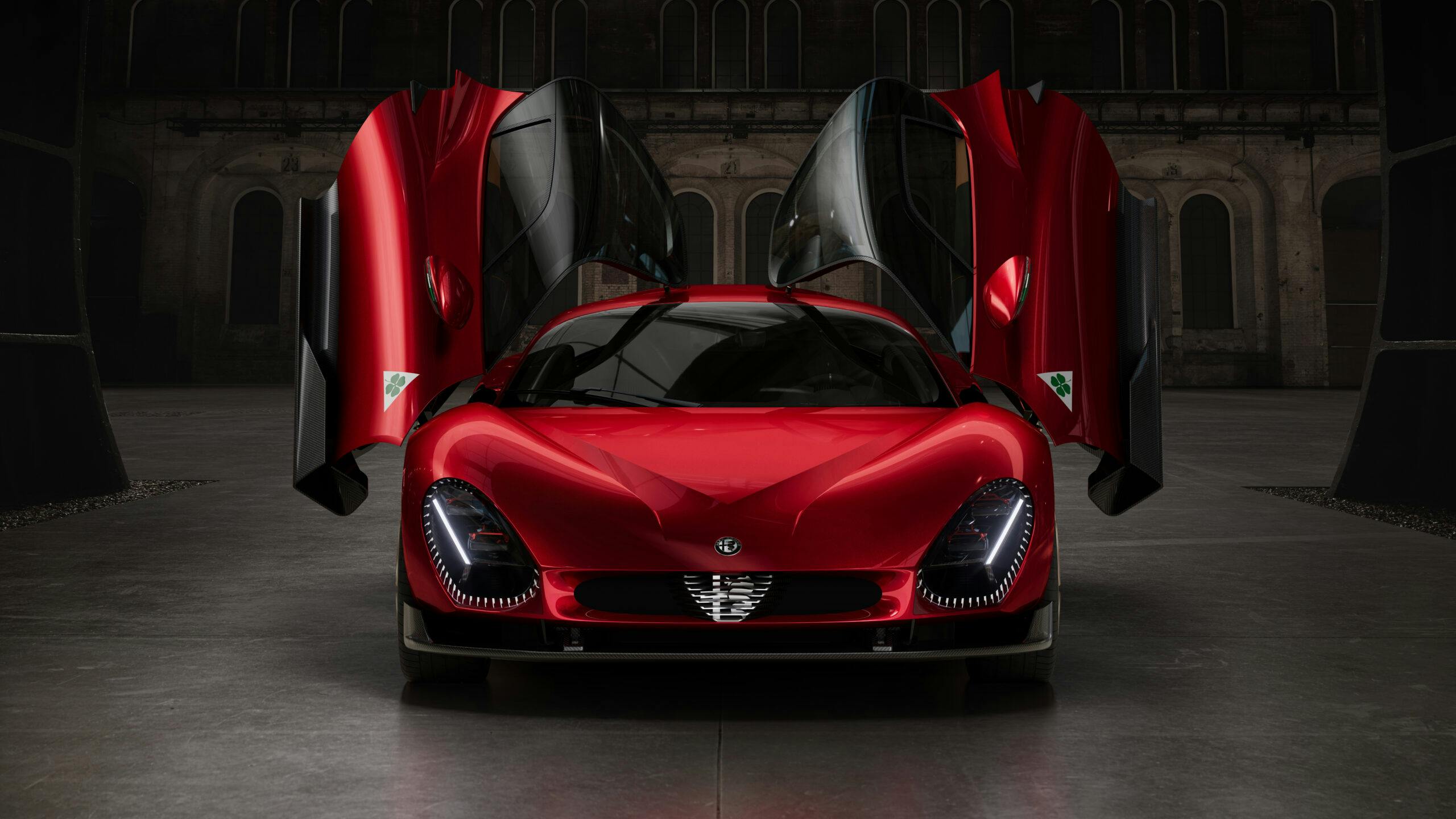
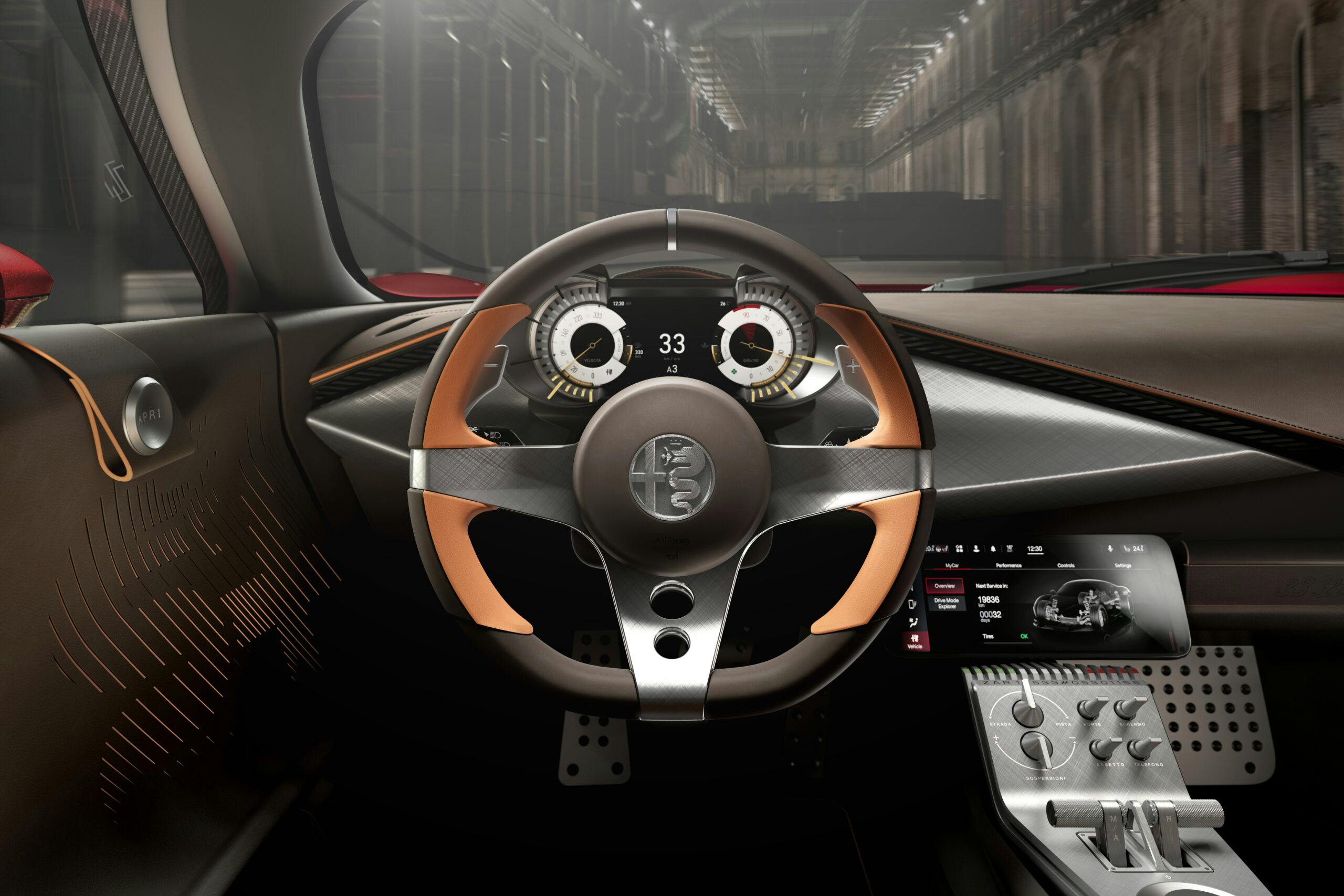

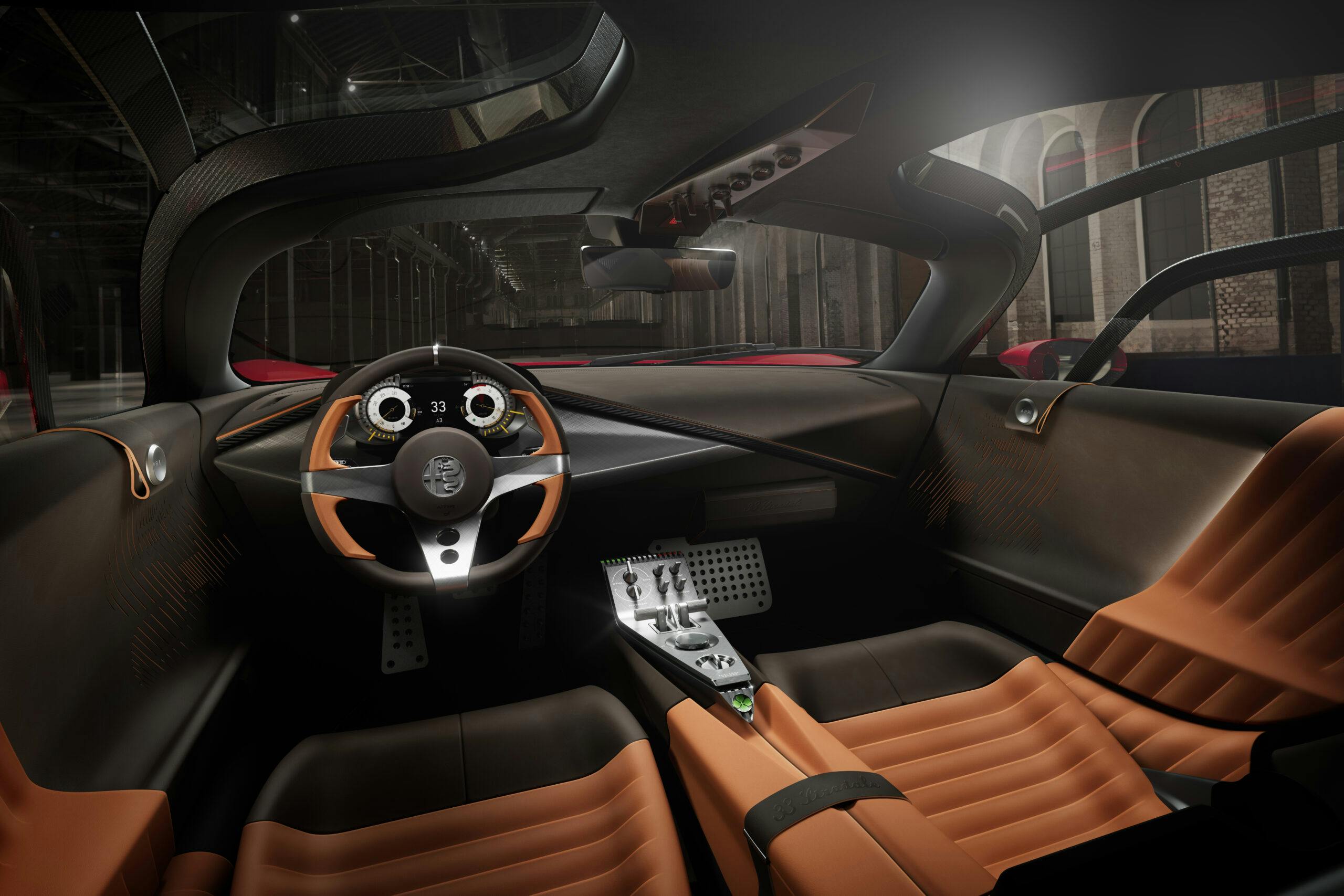
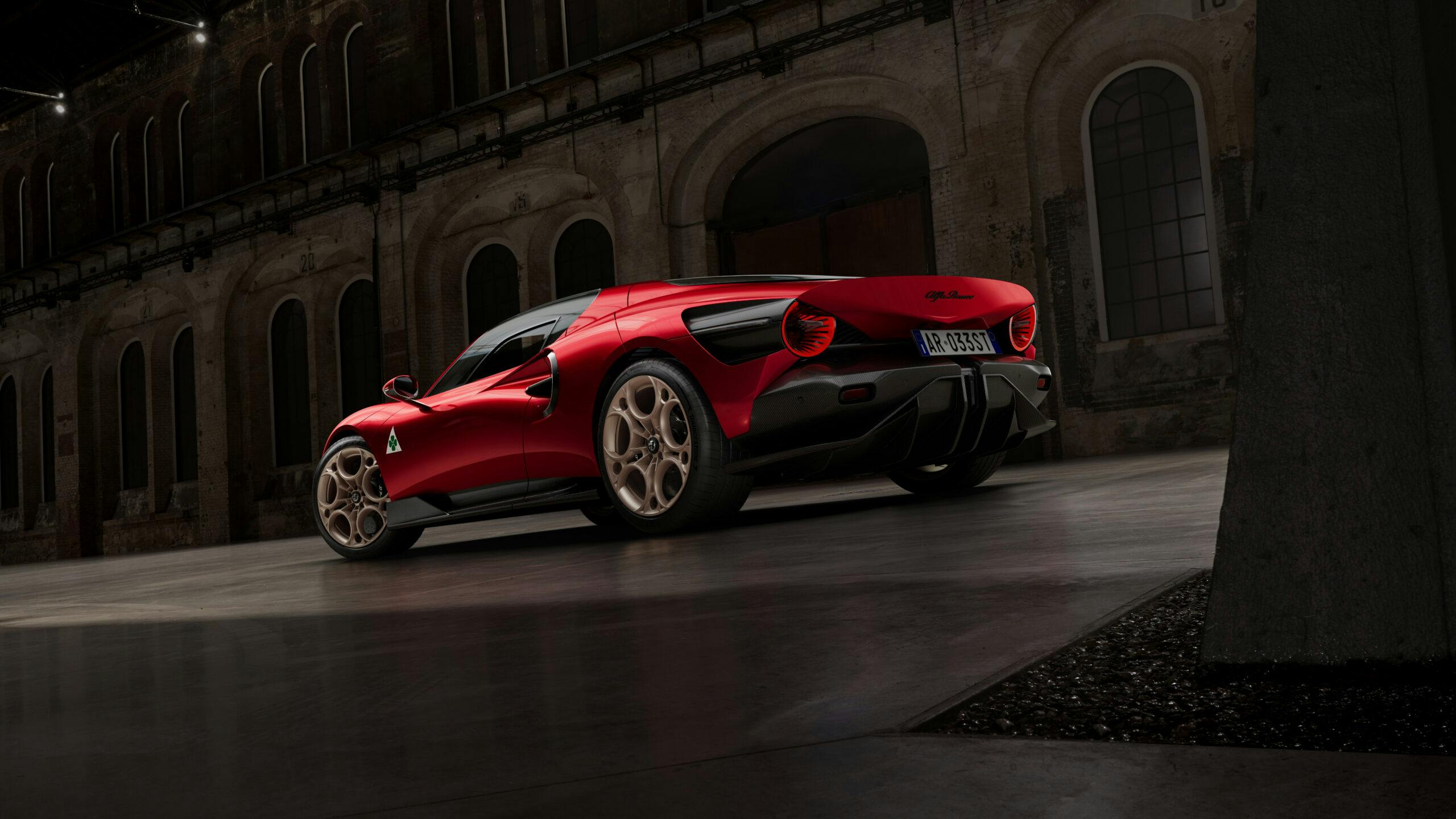






















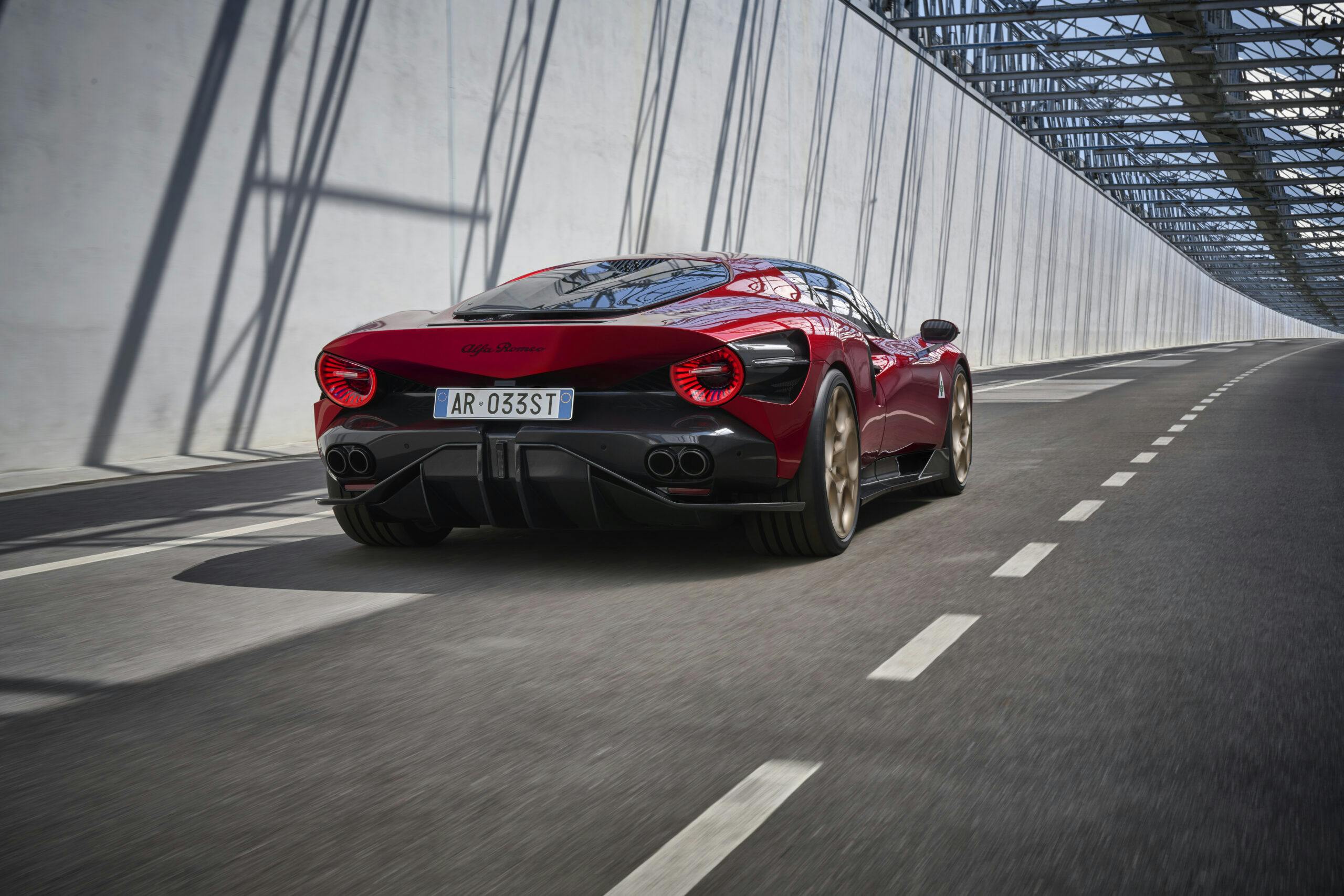
2023 33 Stradale: injustice to the original
In my eyes, there is no better example of Alfa’s management disregard for the heritage of the company’s past 73 years.
A sequel that wishes to respect the original should follow in its track in three aspects: raison d’être (subjectively most important), mechanical characteristics, and aesthetic characteristics (subjectively least important).
The only one that isn’t a failure is the look, even though I don’t like that the beautifully serene appearance of the 33 Stradale has been transformed into another sullen-looking car (as if it had passed over in a post office queue), this new one is a good looking car, if utterly unoriginal.
The mechanical side is either a ridiculous or an offensive failure, ignoring the ev, the engine, beating heart of any car, has been changed from a 2l V8 to a completely different 3l v6. Each cylinder of the 2023 thing is twice as big as the one that is supposed to honor.
Worst of all is the car raison d’être. The 33 Stradale’s principle was to produce a beautiful homologation variant of the Tipo 33.
Not only has the 2023 33 less racing pedigree than a 1991 Cinquecento, but its existential purpose can be seen either as a toy for fat cats (if wearing three pairs of rose-tinted glasses) or more realistically, considering the limited production number fully sold before any review of it’s driving characteristics was (will ever be?) published, as a mean investment to be cellophaned and hidden away for the next decades until its resale value balloons.
I’d argue that this car is even more of a slap in the Alfisti’s faces when the cheapest fun to drive Alfa starts at a ridiculous 27 times the average employee’s monthly salary in its homeland.
I’m part of a vintage race team campaigning a ’72 GTV 2 liter, so my heart is with Alfa!! Your thoughts are serious and worthy of this column. I appreciate your comments.
Agree! I would also mention the lack of a manual transmission…
I think the design is ok- way to busy and lacks that simple elegance that has made Alfa’s designs some of the best- surprised at how heavy the A pillar is from the inside- wow- that seems almost as in your face as the F1 Halo bars are- Yikes! The tail is good other than the busy diffuser lines- again to busy. The worst is the headlights- way to big and out of proportion with the rest of the car. As to the comments on powertrain (number of cylinders, transmissions, etc.) I think we have to recognize that any ICE is another win in the days when soon enough there will be no new engines and everything will be motors, electric that is.
If I had just seen this car alone, without knowing it’s name, I might have thought it was good-looking. Not beautiful, not overly exciting – just good-looking. But there is no way it compares to the original 33 Stradale in either looks nor excitement, IMO. It’s true that the OG is “one of the most beautiful cars ever made”, and it walked the walk when it came to performance as well. It just goes to prove that you can’t improve on near-perfection!
Greetings to everyone,
This is a generation in time where we look and discuss many designs of man made transport on this planet. Your average and most popular is motor cars, motorcycles, scooters and bicycles, which among all these, electrics has began its journey.
Generally speaking and not involving race track performance transports, speed is only a real factor when
design appearance, reliability and price is
achievable for most average incomes.
So at the moment design for all of the above, past and present, the Italians get the Gold Star, Silver goes to the Germans and bronze, well there is no bronze.
Reliability at this point goes to the Germans and that is at times questionable, affordability goes to the Japanese because of their labour force and good appearance the Japanese get that one.
Have I achieved a reasonable and accurate result on this subject and again
I’m talking about the main transports which I spoke about earlier.
Beautiful car. I look forward to seeing one in the flesh!
I think it is beautiful but not in the classic way. It’s definitely more modern frowny face. Also I would rather see some screaming na V8 or 6 instead. Plus it has a near twin Maserati coming out.
Strangely, I kind of wish that such cars would struggle to find buyers like just a couple of decades ago. As it is now, most all of them just vanish into big collections in some desert warehouse or underground parkade in some far off land, never to be driven more than a few miles and then forgotten. A complete waste as their wiring and seals and contacts all corrode and their interiors bake in the heat and sand gets into everything.
I would love it if manufacturers would bar any sales until the cars are put on display at dealerships as a centerpiece. They could spend a year so everybody can come in and look at them and fantasize. And then they can sell them off. At least they’d be “real” for a little while.
I don’t really care that this car exists as I think it’s good-looking, but not beautiful, and I probably will never see it anyway.
That said, I have to applaud the clamshell hood…even though no owner will likely ever work on their own car…I’d like to see more sports cars have this design, instead of hiding everything away and making it difficult to access.